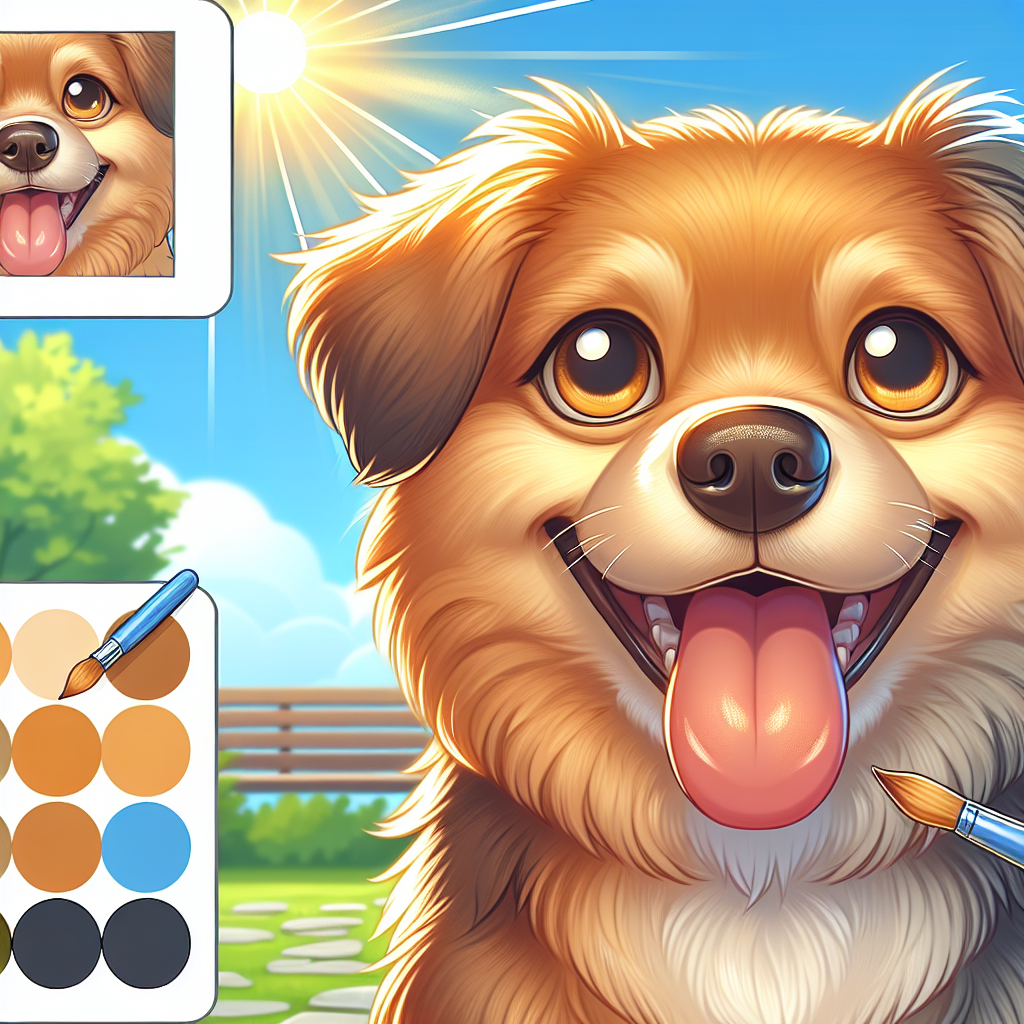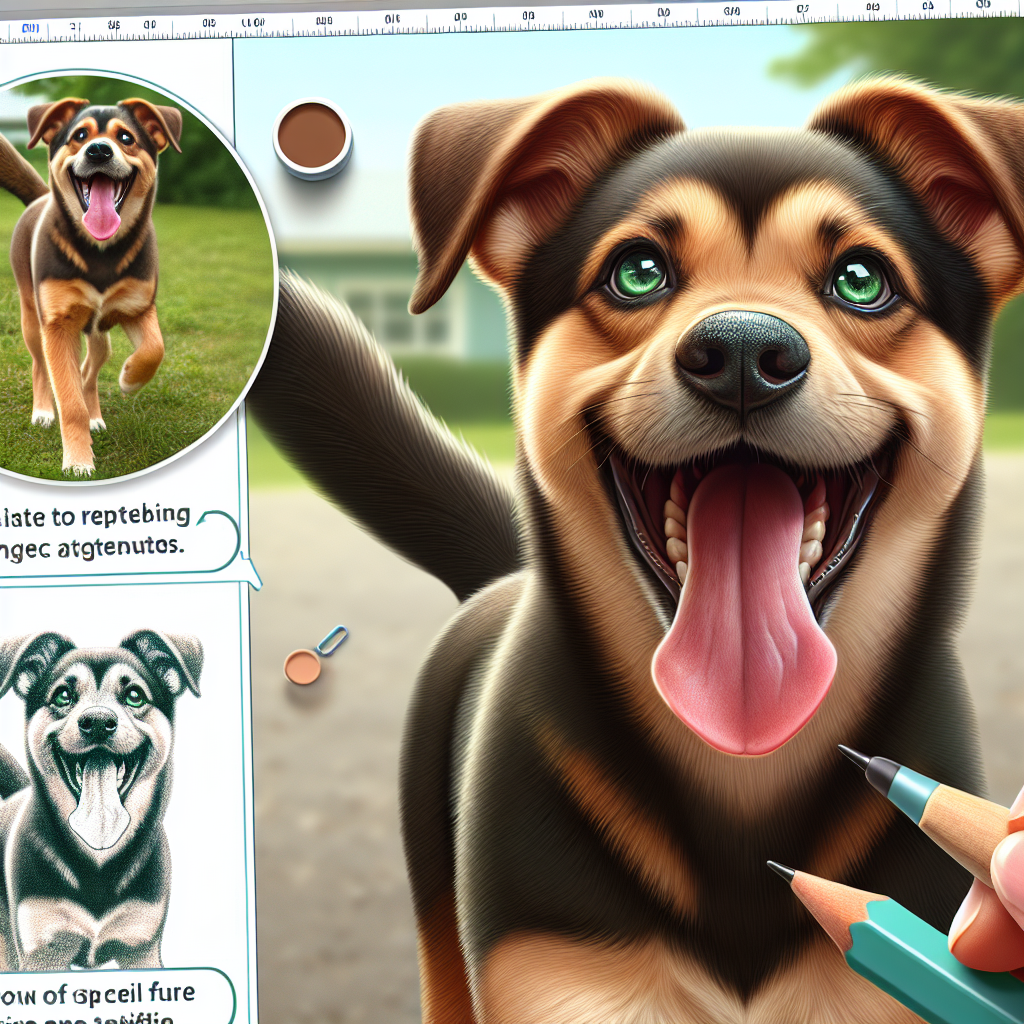Introduction to Fleas

Ah, fleas. Those tiny little buggers that seem to have a special place in the hearts of pet owners everywhere—mostly because they make us itch just thinking about them. You ever watch a dog scratch its ear and think, “Yep, that’s a flea”? Fleas are the ancient warriors of the insect world, having stuck around for millions of years. They’re survivors, expert hitchhikers, and the biggest party crashers in the animal kingdom. But here’s the kicker—do fleas fly? Spoiler alert: Nope, they don’t. But more on that in a sec.
Let’s set the scene: You’re at home, it’s a lazy Sunday, and you hear that unmistakable scratching sound from your dog. You think, “Here we go again.” Fleas are like that annoying relative who shows up uninvited but refuses to leave. They’re wingless, but they’ve got other tricks up their sleeve.
Fleas: The Great Jumpers
So, if fleas don’t fly, how do they get around, you ask? The flea jumping ability is stuff of legends—like those stories your uncle tells at family gatherings, only this one’s true. Fleas can jump up to 150 times their body length. Imagine if you could jump that far; you’d be in the next town before anyone noticed you were gone. Fleas have this insane leg strength that gives them the edge. It’s not magic, it’s anatomy. It’s like they’ve got pogo sticks for legs.
Ever notice how quickly they disappear? That’s because they’ve perfected the art of the jump. Their jumping ability is their main movement method, and it’s why they’re so hard to catch. You might see one for a split second on your pet, but by the time you try to nab it—it’s gone. They’re like the ninja warriors of the insect world.
Why Fleas Don’t Fly
Alright, so back to the million-dollar question: Why don’t fleas fly? Well, because they don’t have wings. Simple as that. Their ancestors might’ve had wings, but somewhere along the evolutionary timeline, they decided to ditch them. Maybe they realized jumping was cooler—who knows? But wingless flea movement is what makes them unique. They’ve got a solid game plan, relying on their legs to get around and their hosts to do the flying for them.
Ever tried catching one? It’s like trying to grab a popcorn kernel mid-air. You think you’ve got it, but it’s already two jumps ahead. It’s their leg strength that’s the secret sauce. Those powerful legs are why they’re such expert jumpers. Fleas don’t need wings when they’ve got such a solid backup plan.
The Anatomy of a Flea
Now, let’s get into the nitty-gritty. Flea anatomy is a marvel of nature. The body of a flea is flat, which means they can slip through fur like a hot knife through butter. Their legs are the real MVPs—strong, springy, and always ready for action. It’s like they skipped leg day at the gym, because every day is leg day for a flea.
Their bodies are built for survival. They’ve got this tough outer shell that’s hard to crush. Ever tried squishing one? It’s like trying to pop a tiny, bouncing rubber ball. They’ve got these mouthparts that are perfect for piercing skin and sucking blood—yeah, sorry for the visual. But that’s how they roll. It’s survival of the fittest, and fleas have been playing this game for millions of years.
Fleas and Their Hosts
Last but not least, let’s talk about the flea-host relationship. It’s a classic tale of sticking with those who feed you—literally. Fleas are like that friend who always forgets their wallet when it’s time to pay. They need a host, someone to ride along with and feed off. Dogs, cats, and even humans become their personal smorgasbord.
Once they find a host, they’re like, “This is home now.” They’ll jump from one host to another, but they always come back to where the grass is greenest. It’s a give-and-take relationship—well, more like take-take. But let’s not get into semantics.
So, next time you hear that familiar scratching sound, remember—fleas might not fly, but they sure know how to make an entrance. They’re survivors in every sense of the word, and they’ve got the anatomy to back it up. Thanks for sticking around and reading all about these little jumpers. Here’s hoping your pets stay flea-free and your Sundays remain lazy. Cheers!
The Flea’s Flightless Journey
So, folks, let’s dive into the wild world of fleas. These tiny critters, they’re like ninja hitchhikers—appearing out of nowhere. You’d think they can fly, right? I mean, how else do they get around so fast? But nope, fleas don’t fly. They’re on a flightless journey, hopping their way through life. Imagine this: a flea decides to move. It can’t just flap its wings and take off. Instead, it hops. Yeah, fleas are like tiny pogo sticks, bouncing from one host to another. They don’t need wings when they can leap tall blades of grass in a single bound. And here’s the kicker—they do this all without breaking a sweat. It’s a unique kind of flea movement without wings that leaves you scratching your head—literally and figuratively.
How Fleas Travel Without Wings
Alright, how do fleas get from one place to another without wings? It’s like they’re on a secret mission, using flea travel methods that defy logic. Fleas have these powerful back legs—stronger than they look. These legs are their ticket to ride, their means of travel. You see, fleas don’t walk or crawl much. Instead, they jump. And when I say jump, I mean they can leap distances over 100 times their body length. It’s like watching a tiny acrobat in action. They just spring off, and before you know it, they’re on your dog, having the time of their lives. It’s impressive, really, how fleas jump long distances. This jump is their lifeline, their way of moving from one dog to another. It’s their dance, their art form, if you will. And we’re just the audience, watching, trying to keep up.
The Mechanics of a Flea’s Jump
Now, let’s talk about the mechanics of a flea’s jump. It’s not just about strength; it’s about precision. Fleas have this protein called resilin in their legs—it’s like a built-in trampoline. They store energy in this little protein, and when they’re ready, they release it in a mighty leap. It’s a simple yet effective method. Watching them in action, it’s like a performance. They crouch, they aim, and then—bam—they’re airborne. It’s all about timing and execution. And when they land on your pet, they’re not just passengers. They’re there to stay, causing chaos and discomfort. Jumping fleas on dogs—it’s a sight. One moment, your dog’s fine, the next, it’s a scratching frenzy. Fleas are relentless, and their impact on pet health? Not good. They’re more than just a nuisance; they’re a menace, leaving pets itchy and restless.
Fleas and Their Impact on Pets
Speaking of pets, let’s not sugarcoat this—fleas and their impact on pets are a nightmare. If you’ve ever seen a dog tormented by fleas, you’ll know what I mean. It’s not just about the itching. It’s the constant discomfort, the sleepless nights. Your poor pup can’t get a moment’s peace. And then there are the vet bills. Oh boy, those bills. A flea infestation can lead to skin infections, allergies, even anemia in severe cases. It’s like a domino effect—one flea leads to another, and before you know it, your pet’s health is compromised. It’s not just about the flea bites; it’s about the stress it causes. The scratching, the biting, the endless cycle of discomfort. As a pet owner, it’s heart-wrenching to watch. But don’t lose hope. There are ways to manage this, ways to give your pet some relief.
Managing Flea Infestations at Home
Now, let’s get down to brass tacks—managing flea infestations at home. It’s no walk in the park, I’ll tell you that. Trying to control fleas in the house is like trying to catch smoke with a net. They’re elusive, persistent, and just when you think you’ve got them, they pop up again. But hey, don’t throw in the towel. I’ve been in the pet industry for over 20 years, and I’ve picked up a trick or two. First things first, clean, clean, clean. Vacuum every nook and cranny, wash your pet’s bedding, and don’t forget those sneaky corners where fleas love to hide. It’s a start. Next, consider flea infestation solutions like natural remedies or treatments. There are plenty out there, but choose wisely. It’s about finding what works for you and your pet. You’re not alone in this fight. We’re in it together. And remember, every effort counts. So here’s to a flea-free tomorrow. Thanks for sticking around, and good luck in your flea-busting journey!
The Flea Circus: A Look at Flea Movement
Hey, it’s Anna here, sipping my coffee and musing on the antics of fleas. So, do fleas fly? Nope, they don’t. But their movement is something else. Fleas are like tiny acrobats, pulling off stunts that would make even the most seasoned circus performer jealous. These little creatures don’t just take a casual stroll. They’ve got their own flea movement patterns that are nothing short of mesmerizing.
Imagine this: a flea, with its spring-loaded legs, can leap over 150 times its own body length. That’s like us humans jumping over a skyscraper. Crazy, right? No wings on these guys, just raw jumping talent. Fleas have got their travel plans sorted, hopping from host to host with precision that would make any hitchhiker proud. They don’t need to fly when they can jump with such gusto. Whether it’s a dog, a cat, or your unsuspecting leg, they’re ready for action.
Why Fleas Are Expert Jumpers
Now, let’s dive into why fleas are such expert jumpers. It’s not some party trick they’ve picked up. Nope, this is a skill honed over millions of years. Fleas have evolved this way because, well, it works. Their jumping ability is their ticket to survival. Picture lounging on your couch, remote in hand, and wham—a flea lands on you like it’s got an agenda. It’s an evolutionary marvel, really.
Their legs act like mini catapults. There’s this special protein called resilin stored in them—when it’s released, off they go. The flea jumping ability is not just impressive—it’s necessary. They need it to find food, escape danger, and continue their pesky lineage. It’s like their version of a superpower, minus the cape and the media attention.
Fleas: A Brief History of Their Evolution
Speaking of evolution, let’s take a walk down memory lane with fleas. Fleas have been around for a long time, much longer than one might think. Their history is rich, filled with tales of adaptation and survival. Fleas have been perfecting their game since the time of the dinosaurs. They’ve seen it all—ice ages, heatwaves, and everything in between.
Flea evolution and adaptation are what keep them resilient. They’ve changed and adapted to their surroundings, becoming the pesky little survivors we know today. Their history isn’t just about survival, though—it’s about thriving. Imagine being a tiny bug and managing to stick around for millions of years. It’s like an annoying superhero origin story, without the glamour. The history of fleas is not just a tale of survival—it’s an epic saga of tiny proportions.
How to Spot Flea Infestations
Alright, so how do you know if you’ve got a flea problem on your hands? Identifying flea infestations isn’t always straightforward. These little guys are sneaky, hiding in carpets, on pets, and in hard-to-reach nooks. But there are signs. Trust me, you don’t want them throwing a party in your home.
First off, keep an eye on your pets. If they’re scratching more than usual, it might be a sign. Fleas love to hide in fur, and your pet is a walking buffet. Check for flea dirt—tiny black specks—on your pet’s skin. It’s a dead giveaway. And if you spot fleas jumping around your home, well, you’ve got company.
Don’t forget to check your fabrics. Fleas like to nestle in carpets and upholstery. If you find yourself scratching your own ankles, chances are, you’ve got a flea infestation. And the sooner you catch it, the better. You don’t want these jumpy little devils taking over your living room.
Final Thoughts: Living with Fleas
Living with fleas can be a real itch—literally. They aren’t going anywhere anytime soon, but with a little knowledge, you can hold your ground. Flea problems are a part of life, especially if you have pets. But they don’t have to take over your home.
Arm yourself with some flea-fighting know-how. Regular checks on your pets and home can go a long way. Dealing with flea problems might not be fun, but it doesn’t have to be a nightmare. With a bit of effort, you can keep them at bay.
Thanks for sticking with me through this itch-inducing journey. Fleas might not fly, but they sure know how to get around. Here’s to hoping your home remains flea-free—or at least manageable. Cheers to you and your patience, and may your days be less itchy.
Quick Takeaways:
Alright, let’s cut to the chase. We’re talking about fleas, the tiny jumpers that refuse to be ignored. Do fleas fly? Nope, they’ve got no wings, but their jumping ability is nothing short of impressive. Imagine this: a flea’s anatomy is built for leaping. Those spring-loaded legs are so strong, they can launch a flea up to 150 times its own body length. It’s like watching a tiny superhero in action. Fleas don’t need wings when they can move like that.
These critters have mastered the art of movement without wings. Flea movement methods are all about jumping. They’re the ultimate hitchhikers, traveling from one host to another with ease. Once they’ve landed on a host, a flea-host relationship begins—one that’s not so great for your pet’s health. Fleas make dogs itchy, restless, and downright miserable. And don’t even get me started on the havoc they wreak in your home. Flea infestations are a nightmare to control, but with a bit of know-how, you can fight back.
So, what’s the takeaway here? Fleas are relentless, but understanding their movement and jumping prowess is your first step to tackling them. Armed with this knowledge, you’re better equipped to deal with these pesky invaders. And remember, while fleas don’t fly, they’re still a force to be reckoned with.
FAQs:
1.
Do fleas fly or jump?
Fleas don’t fly—they jump. Thanks to their powerful legs, fleas can leap long distances. It’s their go-to method for moving around, making them quite the travelers despite their wingless status. So, when you see a flea on your pet, it didn’t fly there; it jumped.
2.
How do fleas jump long distances?
Fleas jump long distances thanks to their anatomy. Their legs are like tiny catapults, storing energy that releases in a powerful burst. This allows them to launch themselves onto hosts or into your home with ease. It’s this jumping ability that makes them such a nuisance.
3.
Why is flea jumping ability such a problem for pet owners?
The flea’s jumping ability allows them to easily infest pets. Once they jump onto a dog or cat, they start feeding and reproducing quickly. This can lead to a serious flea-host relationship that affects your pet’s health, causing itching, discomfort, and even allergic reactions.
4.
What can I do to control fleas in the house?
Controlling fleas in the house starts with cleaning. Vacuum carpets, wash pet bedding, and consider using flea treatments on pets. It’s a process, and it might take time, but persistence is key. Keeping your home and pets clean helps break the flea life cycle.
5.
Do fleas fly when they move from place to place?
No, fleas don’t fly. They rely on their incredible jumping skills to move from place to place. This wingless flea movement is what allows them to travel and spread so easily. So, if you’re battling a flea infestation, it’s their jumps—not flights—you need to worry about.
Conclusion:
So, let’s wrap this up. Do fleas fly? Absolutely not. But, with their jumping ability, they don’t need wings to cause trouble. Flea movement is all about those powerful legs, enabling them to leap from host to host, spreading like wildfire. Understanding this helps you tackle flea infestations at home. These pests might be small, but they pack a punch. Their impact on pet health is undeniable—itchy fur, restless nights, and expensive vet bills are just the start.
But don’t despair. By getting to know their tricks and movement methods, you can keep them at bay. The battle against fleas is a tough one, but knowledge is your best weapon. So, here’s to a future with fewer fleas. Thanks for sticking with me through this wild ride. Stay vigilant, and may your home be flea-free. Cheers!
References:
1. https://www.jcehrlich.com/pest-insights/fleas/do-fleas-bite-humans
2. https://www.orkin.com/pests/fleas/can-fleas-fly
3. https://www.webmd.com/pets/spot-fleas
4. https://proofpest.com/do-fleas-fly/
Our solution eradicates fleas on contact without harmful chemicals, ensuring a safe environment for your pets and family. Easy to use and highly effective, SayByeBugs helps you maintain a flea-free home. Learn more and order today at SayByeBugs.com
Our solution eradicates fleas on contact without harmful chemicals, ensuring a safe environment for your pets and family. Easy to use and highly effective, SayByeBugs helps you maintain a flea-free home. Learn more and order today at SayByeBugs.com








